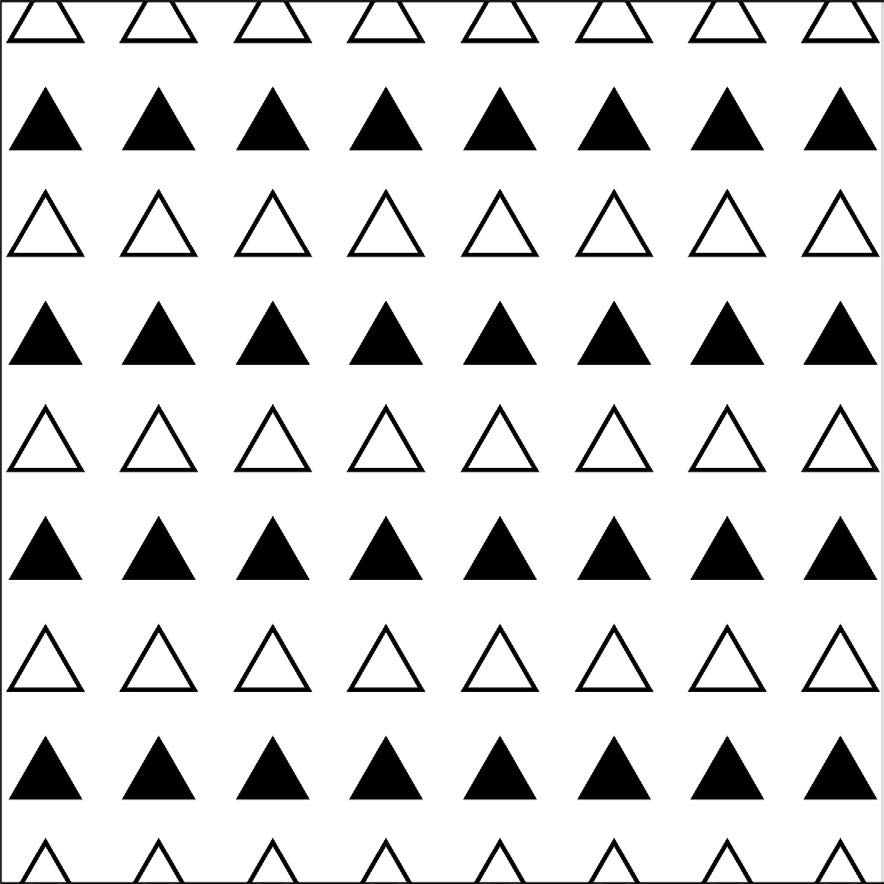Enfoques contemporáneos de la Teoría Gestalt. Clásicos y nuevos principios de agrupamiento perceptivo.
##plugins.themes.bootstrap3.article.main##
Resumen
Parte considerable de los conocimientos pertenecientes a la Teo-ría del Diseño actual ?ej: recursos formales? se sustentan por entero en concepciones gestálticas del pasado siglo. Evidente-mente existe un desfasaje entre los conjuntos Teoría Gestalt y Teoría del Diseño y, por tanto, se requiere una reconsideración del enfoque gestáltico tradicional, sus bases conceptuales y principales postulados. Con esto en mente, el presente trabajo parte de repasar los principales fundamentos teóricos del movimiento gestáltico tradicional, también llamado Escuela de Berlín. Luego, aborda los problemas empíricos y conceptuales que fueron gestándose como consecuencia de los nuevos paradigmas cien-tíficos en el campo de la percepción visual. Finalmente, estudia cómo algunos de estos problemas se redirigen y solucionan en investigaciones contemporáneas de agrupamiento perceptivo. El presente ensayo resume los principales aportes realizados hasta la fecha en lo concerniente al agrupamiento perceptivo, sus principios clásicos y nuevas inclusiones.
##plugins.themes.bootstrap3.article.details##

Esta obra está bajo una licencia internacional Creative Commons Atribución-NoComercial-CompartirIgual 4.0.
- Atribución — Usted debe dar crédito de manera adecuada , brindar un enlace a la licencia, e indicar si se han realizado cambios . Puede hacerlo en cualquier forma razonable, pero no de forma tal que sugiera que usted o su uso tienen el apoyo de la licenciante.
- NoComercial — Usted no puede hacer uso del material con propósitos comerciales .
- No hay restricciones adicionales — No puede aplicar términos legales ni medidas tecnológicas que restrinjan legalmente a otras a hacer cualquier uso permitido por la licencia.
- CompartirIgual — Si remezcla, transforma o crea a partir del material, debe distribuir su contribución bajo la misma licencia del original. NOTA: Este punto aplica para los números 1 al 20 de la revista con la anterior licencia CC-BY-NC-SA 4.0. No aplica para la nueva licencia CC BY-NC 4.0 desde el Volumen 11, Número. 21 (2024).
Citas
Alais D, Blake R, Lee SH. (1998). Visual features that vary together over time group together over space. Nature Neuros- cience; 1:160–164. [PubMed]
Claessens PME, Wagemans J. (2005). Perceptual grou- ping in Gabor lattices: Proximity and alignment. Perception & Psychophysics; 67:1446–1459. [PubMed]
Gepshtein S, Kubovy M. (2007). The lawful perception of apparent motion. Journal of Vision; 7(8):9, 1–15. [PubMed]
Humphreys GW, Riddoch MJ. (1993). Interactions bet- ween object and space systems revealed through neuropsycholo- gy. In: Meyer DE, Kornblum S, editors. Attention and Performance. Vol. 24. Cambridge, MA: MIT Press; pp. 183–218.
Kimchi R, Behrman M, Olson CR. (2003). Perceptual organization in vision. Behavioral and neural perspectives. Mahwah, NJ: Erlbaum.
King DB, Wertheimer M [Michael]. (2005). Max Wertheimer & Gestalt theory. New Brunswick, NJ: Transaction Publishers.
Koffka K. (1935). Principles of Gestalt psychology. Lon- dres, G.B.: Lund Humphries.
Köhler W. (1920). Die physischen Gestalten in Ruhe und im stationären Zustand. Eine natur-philosophische Untersu- chung. Braunschweig. Alemania: Friedr. Vieweg und Sohn. (Traducido y reimpreso como “Physical Ges- talten”. En W. D. Ellis (Ed.), (1938). A source book of Gestalt psychology (pp. 17–54). (Londres, G. B.: Rout- ledge & Kegan Paul Ltd.)
Kubovy M, Holcombe AO, Wagemans J. (1998). On the lawfulness of grouping by proximity. Cognitive Psychology; 35:71–98. [PubMed]
Kubovy M, van den Berg M.(2008). The whole is equal to the sum of its parts: A probabilistic model of grouping by
proximity and similarity in regular patterns. Psychological Review; 115:131–154. [PubMed]
Kubovy M, Wagemans J. (1995). Grouping by proximity and multistability in dot lattices: A quantitative gestalt theory. Psychological Science; 6:225–234.
Metzger W. (1936). Gesetze des Sehens. Frankfurt am Main, Germany: Kramer; (Traducido y reimpreso como “Laws of seeing” (L. Spillmann, M. Wertheimer, & S. Lehar, Trans.) (2006). Cambridge, MA: MIT Press)
Palmer SE, Beck D. (2007). The repetition discrimination task: An objective method for studying perceptual grouping. Attention, Perception, & Psychophysics; 69:68–78. [PubMed]
Palmer SE. (1936). Common region: A new principle of perceptual organization. Cognitive Psychology.;24:436–447. [PubMed]
Palmer SE, Rock I. (1994). Rethinking perceptual organization: The role of uniform connectedness. Psychonomic Bulletin & Review;1:29–55.
Sekuler AB, Bennett PJ. (2001). Generalized common fa- te: Grouping by common luminance changes. Psychological Science;12:437–444. [PubMed]
Sekuler R. (1996). Motion perception: A modern view of Wertheimer’s 1912 monograph. Perception. ;25:1243–1258. [PubMed]
Steinman RM, Pizlo Z, Pizlo FJ. (2000). Phi is not beta, and why Wertheimer’s discovery launched the Gestalt revolu- tion. Vision Research;40:2257–2264. [PubMed]
von Ehrenfels C. (1890). Über "Gestaltqualitäten". Vierte- ljahrsschrift für wissenschaftliche Philosophie.;14:224–292. (Traducido y reimpreo como “On ‘Gestalt qualities’”. En B. Smith (Ed. & Trans.), (1988). Foundations of Gestalt theory (pp. 82–117). Munich, Alemania/Vien- na, Austria: Philosophia Verlag.)
Wagemans J, Elder J, Kubovy M, Palmer S, Peterson M, Singh M, von der Heydt R. A. (2012). Century of Gestalt psychology in Visual Perception I. Perceptual Grouping and Figure-Ground Organization. Psychol Bull. 138(6): 1172–1217.
Wagemans J, Feldman J, Gepshtein S, Kimchi R, Po- merantz J, van der Helm P, van Leeuwen C. (2012). A Century of Gestalt Psychology in Visual Perception II. Conceptual and Theoretical Foundations. Psychol Bull; 138(6): 1218–1252.
Wertheimer M. (1912). Experimentelle Studien über das Sehen von Bewegung. Zeitschrift für Psychologie;61:161–265.
(Traducido y reimpreso como “Experimental studies on the seeing of motion”. En T. Shipley (Ed.), (1961). Classics in psychology (pp. 1032–1089). Nueva York, NY: Philosophical Library.)
. (1922). Untersuchungen zur Lehre von der Gestalt, I: Prinzipielle Bemerkungen. Psychologische Fors- chung; 1:47–58. (Traducido y reimpreso como “The general theoretical situation”. En W. D. Ellis (Ed.), (1938). A source book of Gestalt psychology (pp. 12– 16). Londres, G. B.: Routledge & Kegan Paul Ltd.)
. (1923). Untersuchungen zur Lehre von der Gestalt, II. Psychologische Forschung; 4:301–350. (Tradu- cido y reimpreso como “Laws of organization in per- ceptual forms.” En W. D. Ellis (Ed.), (1938). A source book of Gestalt psychology (pp. 71–94). Londres, G. B.: Routledge & Kegan Paul Ltd.)
Westheimer G. (1999). Gestalt theory reconfigured: Max Wertheimer’s anticipation of recent developments on visual neuroscience. Perception; 28:5–15. [PubMed].






















